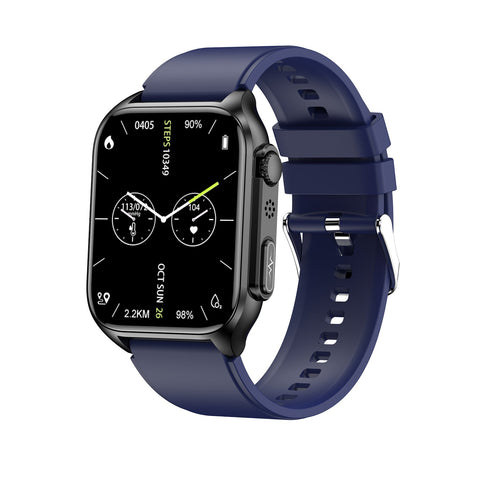How to Correct Knock Knees
Knock knees, also known as genu valgum, is a common leg deformity characterized by knees that bend inward and touch when standing straight, resembling the shape of the letter "O". This condition not only affects appearance but can also lead to mobility issues and other health concerns. Fortunately, knock knees can be corrected through proper exercises, posture correction, and lifestyle changes.

Causes of Knock Knees
Before delving into correction methods, it's important to understand the causes of knock knees:
- Genetic Factors: Individuals with a family history of knock knees are more prone to developing this condition.
- Bone Development Issues: Poor bone development during childhood or growth-related problems can lead to knock knees.
- Vitamin D Deficiency: Lack of vitamin D can affect calcium absorption, contributing to bone development issues.
- Poor Posture: Prolonged poor standing or sitting posture can cause abnormal tension in leg muscles and ligaments, leading to knock knees.
- Lack of Physical Activity: Insufficient exercise, particularly leg muscle exercises, can contribute to knock knees.
Methods to Correct Knock Knees
1. Exercise and Stretching
Inner Thigh Muscle Exercises
Weak inner thigh muscles often accompany knock knees. Strengthening these muscles can help correct leg alignment.
- Wall Squats: Lean against a wall with feet apart at shoulder width. Slowly squat down until thighs are parallel to the floor, hold for 30 seconds, then slowly stand up. Repeat 10-15 times.
- Straight Leg Raises: Lie flat on your back, bend one leg, and keep the other leg straight. Slowly raise the straight leg to a 45-degree angle, hold for a few seconds, then slowly lower it. Do 10-15 repetitions per leg.
Adductor Muscle Exercises
Strengthening the adductor muscles can improve leg symmetry.
- Adductor Stretch: Sit on the ground with legs straight and feet together. Open knees outward and lean forward, feeling a stretch along the inner thighs. Hold for 30 seconds, repeat 3 times.
- Side-Lying Leg Lifts: Lie on one side with bottom leg straight and top leg bent over the bottom leg. Slowly lift the bottom leg upwards, hold for a few seconds, then lower it. Do 10-15 repetitions per leg.
2. Posture Correction
Maintain Proper Standing Posture
Poor standing posture can exacerbate knock knees. When standing, focus on:
- Keeping feet apart at shoulder width.
- Slightly bending knees to avoid locking them.
- Distributing weight evenly on both feet.
Adjust Walking Posture
Maintain a natural stride while walking to avoid a knock-kneed gait. Practice the following exercises to improve walking posture:
- Heel-to-Toe Walking: Walk with your heel touching the ground first, then transition to the entire foot, and finally lift the toes off the ground.
- Straight-Line Walking: Draw a straight line on the ground and walk along it, ensuring both feet stay on the line to improve gait.
3. Physical Therapy and Corrective Devices
Physical Therapy
Physical therapists can help correct knock knees through manual therapy and specific exercise regimens tailored to the individual, including:
- Joint Mobilization: Techniques to loosen joints and improve joint mobility.
- Muscle Strengthening Training: Targeted exercises to strengthen leg muscles and correct muscle imbalances.
Corrective Devices
Devices like orthotic shoe inserts or knee braces can help maintain proper leg alignment throughout daily activities. These should be used under the guidance of a healthcare professional or physical therapist.

4. Lifestyle Changes
Increase Outdoor Activities
Outdoor activities not only increase vitamin D intake but also promote overall physical activity. Spending 15-20 minutes in the sun daily can aid in vitamin D synthesis, essential for healthy bone development.
Balanced Diet
Maintaining a balanced diet rich in calcium and vitamin D is crucial for bone health. Foods such as milk, cheese, green vegetables, and fish are good sources of calcium and vitamin D.
5. Professional Medical Intervention
For severe knock knees, professional medical intervention such as surgical treatment may be necessary. Common surgical methods include:
- Tibial Osteotomy: Adjusting the angle of the shinbone to correct knock knees.
- Joint Replacement Surgery: For severe cases of degenerative joint disease, joint replacement surgery may be required.
Conclusion
Correcting knock knees requires a comprehensive approach, including exercise, posture correction, physical therapy, corrective devices, and necessary lifestyle changes. Each individual's situation is unique, so it's advisable to undergo correction under the guidance of a healthcare professional or physical therapist. With consistent and scientific methods, most individuals can achieve correction of knock knees, restoring normal leg shape and function.











